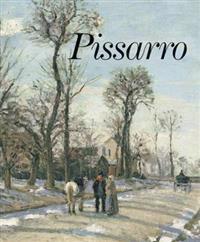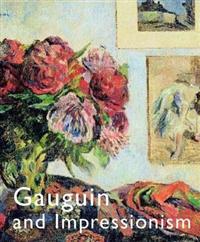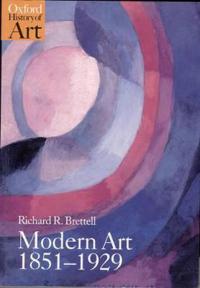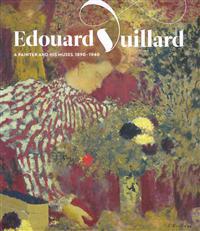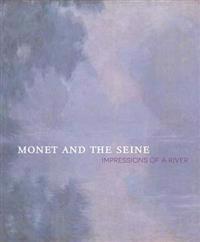Pissarro (Inbunden)
avGuillermo Solana, Joachim Pissaro, Richard Brettell
ISBN: 9788415113423 - UTGIVEN: 2013-11"Humble and colossal," as his friend Cezanne described him, Camille Pissarro is at once the most important and the least familiar of the leading Impressionist painters. As a mentor to that group, which he helped to convene, Pissarro was responsible for drafting the statutes of the artists' cooperati[...]
Gauguin and Impressionism (Pocket)
avRichard R. Brettell, Anne-Birgitte Fonsmark, Richard R. Brettell
ISBN: 9780300134346 - UTGIVEN: 2007-07Paul Gauguin was introduced into the Impressionist circle by Camille Pissarro and contributed major works to five of the eight Impressionist exhibitions between 1879 and 1886. During these years, he transformed himself from a banker-stockbroker into a professional artist and from a family man into a[...]
Modern Art, 1851-1929 (Häftad)
avRichard R. Brettell
ISBN: 9780192842206 - UTGIVEN: 199904The period 1851 to 1929 witnessed the rise of the major European avant-garde groups: the Realists, Impressionists, Post-Impressionists, Symbolists, Cubists, and Surrealists. It was also a time of rapid social, economic, and political change, encompassing a revolution in communication systems and tec[...]
Edouard Vuillard (Inbunden)
avStephen Brown, Richard R. Brettell, Stephen Brown
ISBN: 9780300176759 - UTGIVEN: 201205In many of Edouard Vuillard's (1868-1940) most famous paintings, figures are nestled in intimate settings among bold patterns and colours. As the viewer's eye adjusts to the complexity of the scene, the artist's world opens up. At a young age, Vuillard was one of a group of avant-garde painters in P[...]
Monet and the Seine (Pocket)
avHelga Kessler Aurisch, Tanya Paul, Richard R. (CON) Brettell
ISBN: 9780300207835 - UTGIVEN: 2014-08During his career, French artist Claude Monet (1840--1926) used the Seine as his testing ground for documenting on canvas the transformative effects of light and atmosphere. He produced many ethereal, evocative, and poetic paintings of the meandering river, which remained his favorite subject and al[...]
Robert Lehman Collection at the Metropolitan Museum of Art, The: v. 3: Nineteenth- and Twentieth-Century Paintings (Övrig)
avRichard R. Brettell, Paul Hayes Tucker, Natalie H. Lee
ISBN: 9780691145365 - UTGIVEN: 2010-01-03Robert Lehman, one of the foremost art collectors of his generation, embraced both traditional and modern masters. This volume catalogues 130 nineteenth- and twentieth-century paintings that are now part of the Robert Lehman Collection at the Metropolitan Museum. The majority of the works are by art[...]

